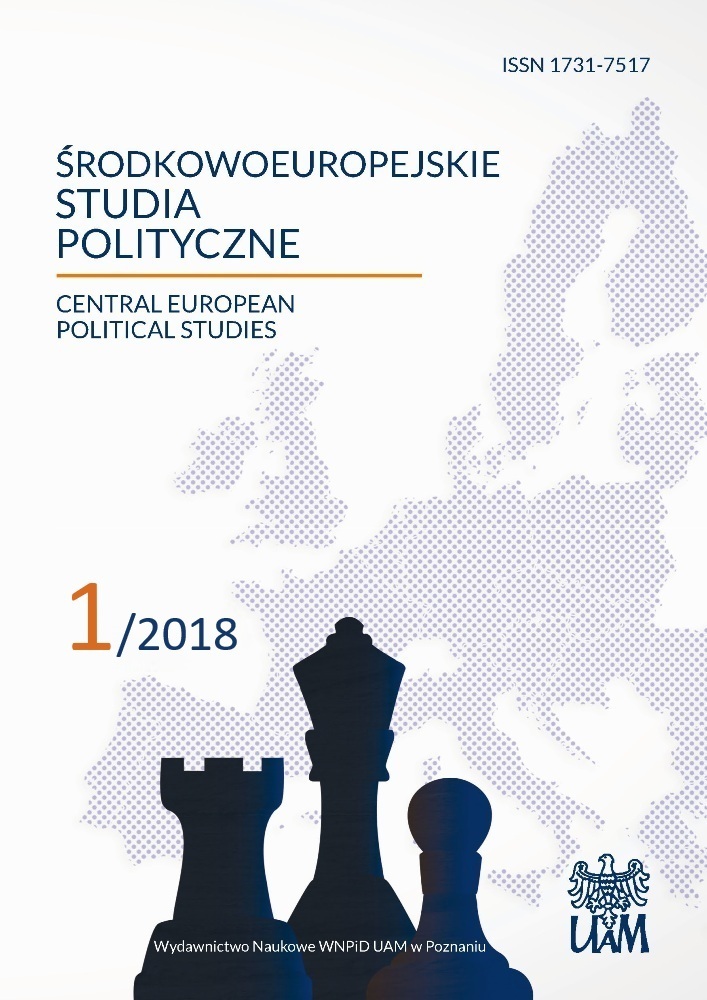Abstract
Regardless of the theoretical perspective, the aspect of time is recorded in every study regarding the evolution of political systems. It is of particular importance in the analysis of systems transforming from authoritarian to democratic regimes. This applies to many parliamentary systems, i.e. based primarily on mechanisms of periodic elections to representative bodies. Relatively little attention is paid to the topic of time in Polish political science literature. The aim of the article is to present the results of research on the use of time in the Polish Sejm in 1989–2015, i.e. in the term of office X–VII. Time was analyzed in the physical and organizational sense. On the basis of official data from the Sejm of the Republic of Poland, the dynamics of the use of time was examined by analyzing the number of meeting days and the length of Sejm sessions. The research results indicatethat the characteristic feature of the analyzed period is the changing dynamics of time use in Sejm. In this regard, the fourth (IV) and the fifth term (V) of Sejm seem to be the most important.References
Agre P. E. (2002), Real-time politics: The internet and the political process, „The Information Society”, vol. 18, nr 5, s.311–331.
Alonso A. M. (1994), The politics of space, time and substance: State formation, nationalism and ethnicity, „Annual Review of Anthropology”, vol. 23, s. 379–405.
Anderson S. E., Woon J. (2014), Delaying the buck: Timing and strategic advantages in executive-legislative bargaining over appropriations, „Congress & the Presidency”, vol. 41, s. 25–48.
Blok Z. (2006), Transformacja jako konwersja funkcji wewnątrzsystemowych na przykładzie Polski, Wydawnictwo Naukowe UAM, Poznań.
Cargill T. F., Hutchinson M. M. (1991), Political business cycles with endogenous election timing: Evidence from Japan, „The Review of Economics and Statistics”, vol. 73, nr(4), s.733–739, https://doi.org/10.2307/2109416.
Chmaj M. (1996), Sejm „kontraktowy” w transformacji systemu politycznego Rzeczypospolitej Polskiej, Wydawnictwo Uniwersytetu Marii Curie-Skłodowskiej, Lublin.
Collier R. B., Collier D. (1991), Critical junctures and historical legacies, Princeton University Press, Princeton.
Dudzińska A. (2015), System zamknięty. Socjologiczna analiza procesu legislacyjnego, Wydawnictwo Naukowe Scholar, Warszawa.
Easton D. (1979), A systems analysis of political life, The University of Chicago Press, Chicago–London.
Gersen J. E., Posner E. A. (2007), Timing rules and legal institutions, „Harvard Law Review”, s. 543–589.
Goetz K. H. (2009), How does the EU tick? Five propositions on political time, „Journal of European Public Policy”, vol. 16, nr 2, s. 202–220.
Goetz K. H. (2013), The EU timescape, Routledge.
Hix S., Marsh M. (2011), Second-order effects plus pan-european political swings: An analysis of European Parliament elections across time, „Electoral Studies”, vol. 30, nr 1, s. 4–15.
Huntington S. P. (1991), Democracy’s third wave, „Journal of Democracy”, vol. 2, nr 2, s. 12–34.
Kamiński A. (2010), Stracony moment konstytucyjny w pokomunistycznej Polsce: skutki dla jakości rządzenia dwadzieścia lat później, w: Modernizacja Polski. Struktury, agencje, instytucje, red. W. Morawski, Wydawnictwa Naukowe i Profesjonalne, Warszawa.
Kasianiuk K. (2016), Zespoły poselskie i parlamentarne jako formy samoorganizacji parlamentarzystów. Wyniki polskich badań eksploracyjnych, „Wrocławskie Studia Politologiczne”, vol. 20, s. 124–140.
Kayser M. A. (2005), Who surfs, who manipulates? The determinants of opportunistic election timing and electorally motivated economic intervention, „American Political Science Review”, vol. 99, nr 1, s. 17–27.
Lamport L. (1998), The part-time parliament, „ACM Transactions on Computer Systems (TOCS)”, vol. 16, nr 2, s.133–169.
Lupia A., Strøm K. (1995), Coalition termination and the strategic timing of parliamentary elections, „American Political Science Review”, vol. 89, nr 3, s. 648–665, https://doi.org/DOI:10.2307/2082980.
Nalewajko E., Wesołowski W. (2007), Five Terms of the Polish Parliament, 1989–2005, „The Journal of Legislative Studies”, vol. 13, nr 1, s.59–82, https://doi.org/10.1080/13572330601165295.
Osborne P. (1995), The politics of time, Verso, London.
Rasmussen A., Toshkov D. (2011), The inter-institutional division of power and time allocation in the European Parliament, „West European Politics”, vol. 34, nr 1, s.71–96.
Sartori G. (1994), Teoria demokracji, tłum. P. Amsterdamski, Wydawnictwo Naukowe PWN, Warszawa.
Schumpeter J.A. (2013), Capitalism, socialism and democracy, Routledge.
Sokołowski J., Poznański P. (2008), Wybrane aspekty funkcjonowania Sejmu w latach 1997–2007, Oficyna Wydawnicza AFM, Kraków.
Toshkov D., Lowery D., Carroll B., Berkhout J. (2013), Timing is everything? Organized interests and the timing of legislative activity, „Interest Groups & Advocacy”, vol. 2, nr 1, s. 48–70.
Uchwała Sejmu Rzeczypospolitej Polskiej z dnia 30 lipca 1992r. Regulamin Sejmu Rzeczypospolitej Polskiej, M. P. 1992, Nr 26, poz. 185.
Zubek R., Klüver H., Matczak M., Zalasiński T. (2012), Barometr legislacyjny. Analiza przyczyn braku terminowości w realizacji rządowych planów legislacyjnych w latach 2008–2011, Domański-Zakrzewski-Palinka, Warszawa.

